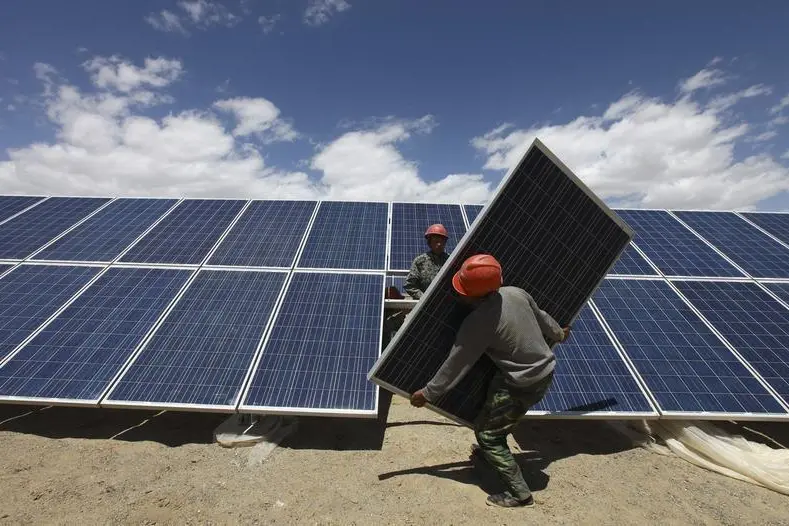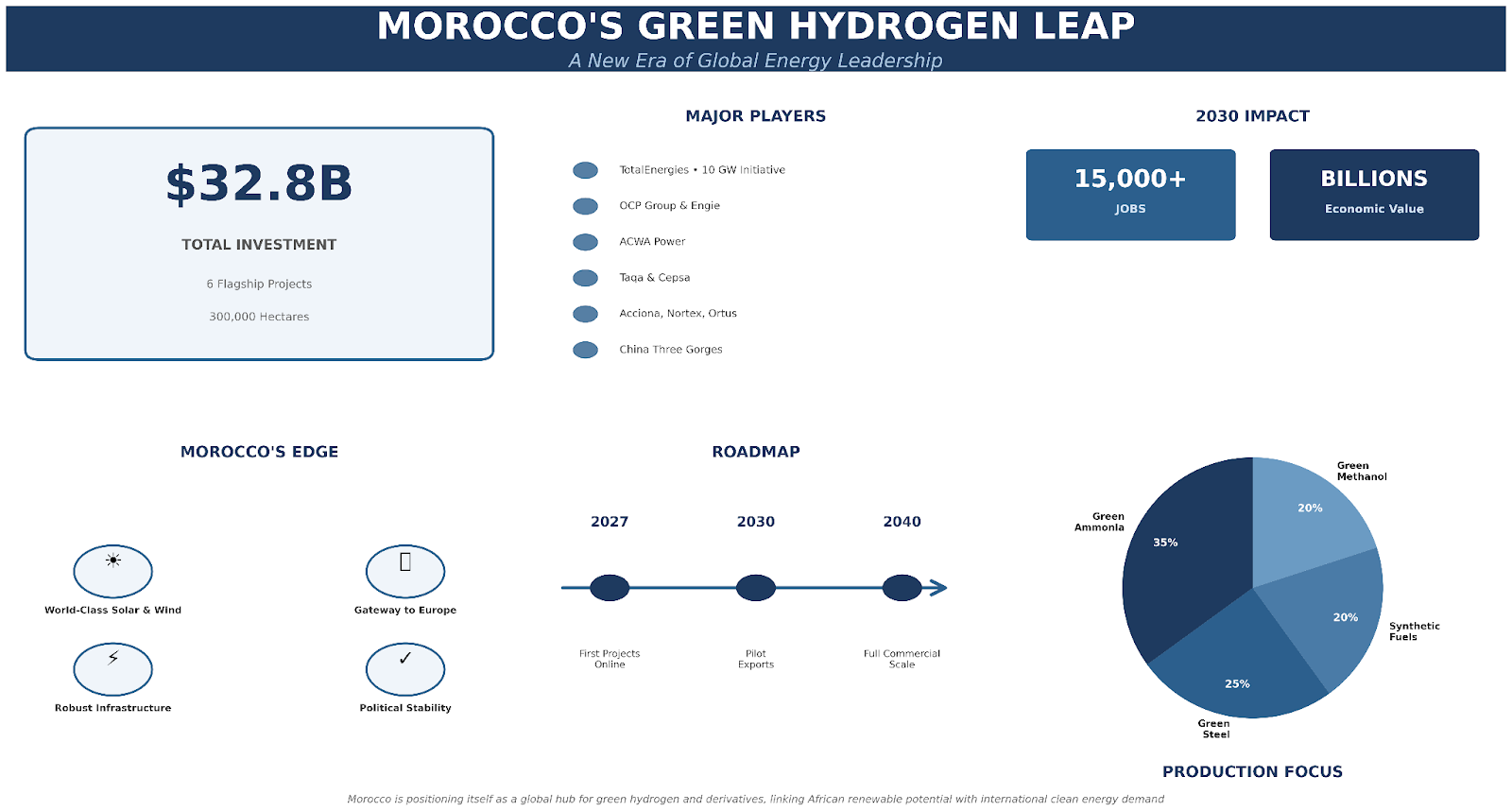
Foreign Direct Investment in Brazil: Mining at the Center of a New Capital Cycle
.png)
Morocco Secures US Backing for $800M High Purity Polysilicon Plant: A Strategic Move to Reshape Global Supply Chains

In 2025, Morocco moved from promise to execution in the global green hydrogen race. Building on world-class wind and solar resources, a strategic gateway to Europe, and a stable investment climate, the country is catalyzing a multi-billion-dollar industrial transition with regional and international significance.
At the center of this push is the “Morocco Offer,” a government-led framework designed to accelerate the entire green hydrogen value chain from renewables-powered electrolysis to downstream production of green ammonia, methanol, synthetic fuels, and green steel. By March 2025, six flagship projects had been approved, with $32.8 billion in investment committed across an initial 300,000 hectares, and a roadmap to scale land allocation to one million hectares to accommodate future ventures. This deliberate, phased approach is structured to bring projects online faster, de-risk early investments, and align infrastructure and regulation with market needs.
A diverse lineup of Moroccan and international players is anchoring the first wave of projects, signaling both technological breadth and export ambition. TotalEnergies is leading a 10 GW green hydrogen initiative in southern Morocco targeting operations by 2027. OCP Group and Engie are advancing green ammonia production and R&D, leveraging Morocco’s phosphate strengths for fertilizer value chains. Acciona, Nortex, and Ortus are co-developing large-scale green ammonia plants, while Taqa and Cepsa are building green ammonia and industrial fuel projects for domestic and export markets. Nareva is developing multi-use hydrogen for industry and energy, and ACWA Power alongside UEG and China Three Gorges are pioneering green ammonia and green steel projects. This consortium approach diversifies technology, spreads risk, and ties Morocco into multiple global supply chains from fertilizers to fuels and metals.

Morocco’s magnetism for green hydrogen investment rests on four pillars: exceptional wind and solar potential enabling competitive, high-capacity-factor renewable power; proximity to Europe, which reduces transport costs and syncs with EU decarbonization timelines; political stability and credible institutions that support long-horizon infrastructure plays; and a robust, expanding grid infrastructure essential for large-scale electrolysis and industrial off-take. With early projects coming online, Morocco is positioned to meet a significant share of its own clean energy demand and supply a meaningful portion of Europe’s future hydrogen needs.
By 2030, experts estimate more than 15,000 direct and indirect jobs will be created across construction, operations, and adjacent services, adding billions in economic value through export revenues, industrial upgrades, and localized supply chains. The roadmap prioritizes early local use and pilot exports in the late 2020s and early 2030s, then progressively scales to full commercial export by 2040 aligned with the EU Green Deal and transnational infrastructure initiatives such as the H2Med corridor.
Success is not guaranteed. Key execution challenges include environmental stewardship to protect biodiversity and ensure lifecycle emissions integrity; water availability, which will require desalination capacity and water reuse for electrolysis without straining local resources; local value capture through domestic manufacturing, workforce skills, and R&D ecosystems; and regulatory clarity to harmonize permitting, standards, incentives, and certification for green molecules and derivatives. Addressing these early and transparently will determine whether Morocco transitions from bold plans to durable leadership.
As of late 2025, Morocco’s green hydrogen agenda represents a unique experiment linking Africa’s renewable strengths with global industrial decarbonization. By aligning policy, land, capital, and infrastructure, the country is making a calculated, multi-billion-dollar bet: that clean molecules will underpin the next era of energy trade and that Morocco can be one of its essential hubs. If the momentum holds, Morocco won’t just participate in the hydrogen economy it could help define it.

.png)
